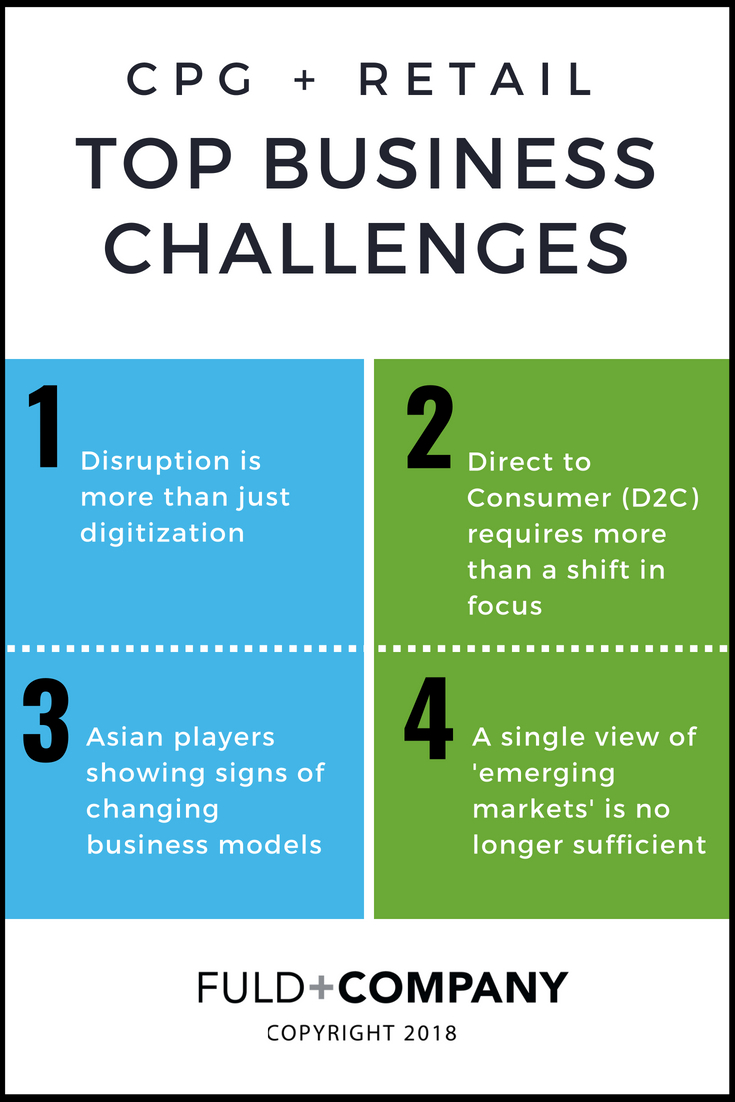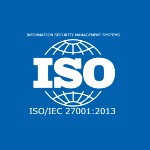Top Business Challenges for Competing in the CPG + Retail Industry
Posted by | Fuld & Company
 Manufacturers, distributors and retail firms in the consumer packaged goods (CPG) industry face an uncertain future, fraught with as many challenges as new opportunities.
Manufacturers, distributors and retail firms in the consumer packaged goods (CPG) industry face an uncertain future, fraught with as many challenges as new opportunities.
The rules are being rewritten as new players emerge and traditional players are forced to rethink their business models. At Fuld + Company, our team works with clients to address these dynamics head on, uncovering new business models, understanding and exploiting others’ and ensuring that our clients are in the driver’s seat and not a victim of unforeseen consequences. Some of the themes we have identified as major factors for a successful future include:
1. Disruption is more than just digitization
When asked about sources of disruption, most people cite examples of how technology is changing the way companies conduct business or serve their customers. To do so however, puts all attention on technology at the expense of better understanding the other sources of disruption, such as consolidation, disinter-mediation, re-inter mediation, vertical integration and network orchestration, which can have equally dramatic effects on a marketplace. While digitization and these other sources of disruption are not mutually exclusive, they need to be considered separately. Their implications can be just as consequential and shift profit pools inextricably from one company to another or one business model to another. Companies need to take a more holistic approach to identifying and monitoring sources of disruption if they plan to respond to or even initiate such disruption rather than be blindsided by it.
2. Direct to Consumer (D2C) requires more than a shift in focus
Direct to Consumer (D2C) models have gained a great deal of attention in recent years and for good reason. CPG manufacturing firms, traditionally far removed from their consumers and who have to share margins with many players in the distribution chain, see D2C models as an opportunity to gain valuable consumer insights and enjoy greater margins for their products. Running a D2C business is a very different enterprise however than manufacturing high quality innovative products at the least expensive price. Companies often struggle to invest the resources and make the organizational changes needed to effectively capture this opportunity. Greater thought needs to go into understanding what it takes to pursue this model.
3. Asian players showing signs of changing business models
As China pursues its One Belt One Road initiative, labor rates rise in Asia and local Asian manufacturers face increased pressure to sustain their low margin high volume business models. CPG firms are beginning to see traditional Asian manufacturers vertically integrate and make investments in distribution, wholesale and even retail in global markets. It is no longer sufficient to simply monitor the manufacturing output of Asian CPG manufacturers to better understand their strengths and ambitions. CPG manufacturers now need to consider their investments in other countries and services to foresee the threat they play on markets globally across distribution, wholesale and retail.
4. A single view of ‘emerging markets’ is no longer sufficient
As CPG firms have learned over the past 20 years, it is no longer helpful to lump all emerging markets into the same category assuming they offer similar opportunities or will grow along the same trajectory. Each emerging market is subject to its own confluence of dynamic macro and micro factors which can shape and can quickly change its relative attractiveness for investment. Companies need to abandon the idea of having a single “emerging market” strategy and must tailor their entry and expansion plans to the unique nuances of each country. Scenario planning, which incorporates a number of different possible routes to market, is one approach to addressing such uncertainties.
Tags: China, Competitive Strategy, Consumer Products & Retail, Disruption, Emerging Markets, Industrial Goods, Scenario Planning



















